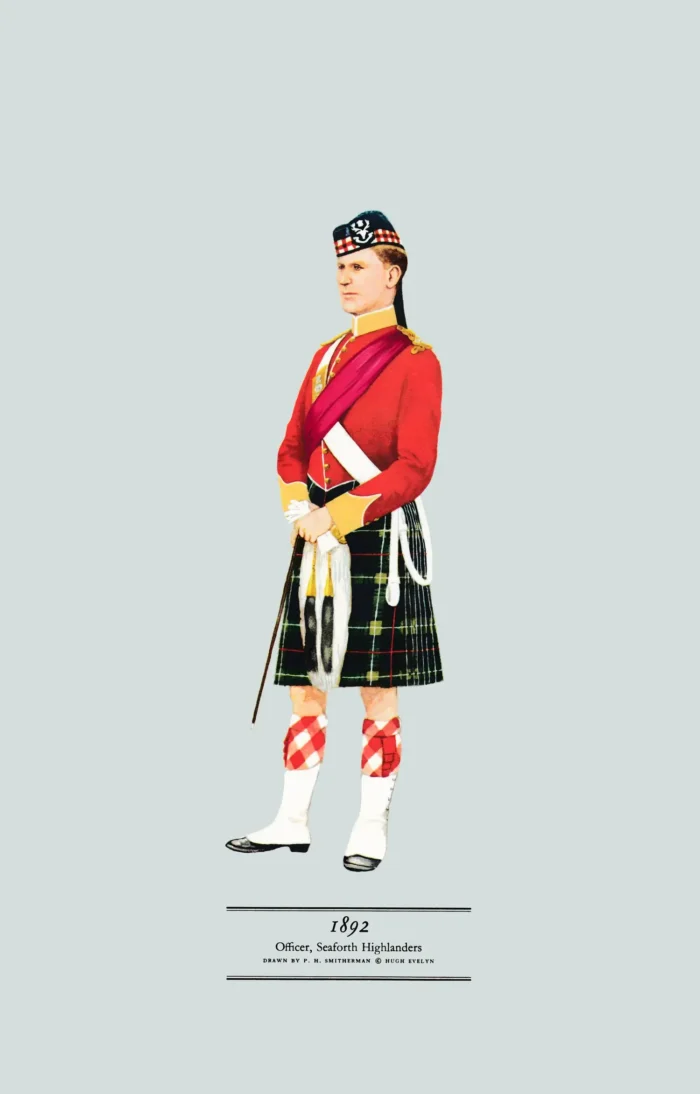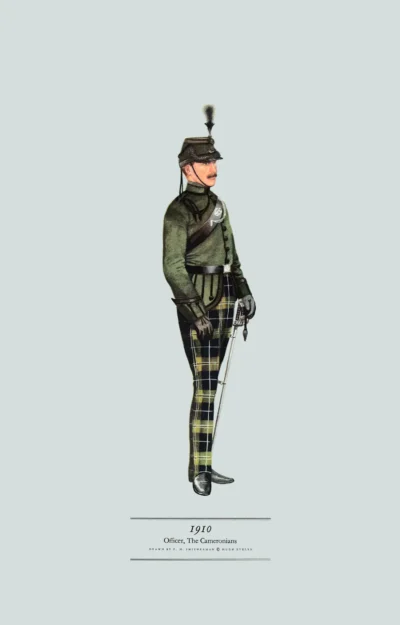Officer, Seaforth Highlanders, 1892
£12.00
Raised 1778; from 1881 Seaforth Highlanders; from 2006 Royal Regiment of Scotland – 2 SCOTS (scroll down for a more detailed Description)
Published 1963 by © Hugh Evelyn Limited; drawn by Colonel Philip Henry Smitherman (1910-1982), Royal Corps of Signals
Size: c. 24.5 x 37.5 cm [9 ½ ″ x 14 ½ ″] (may vary slightly from printers’ cut 50 years ago)
Printed on on medium cardstock weighing 144 g/sm2 faced in light greyish blue (RGB c. d5dede)
Print is STANDARD size – shipping is the same for 1 to 10 prints (based on largest print size in your order) – see Shipping & Returns.
In stock
Description
The Seaforth Highlanders was a historic line infantry regiment of the British Army, associated with large areas of the northern Highlands. The regiment arose from the amalgamation of the 72nd (Duke of Albany’s Own Highlanders) and the 78th (Highlanders) (Ross-shire Buffs), as part of the Childers Reforms of the British Army in 1881. It was named after Kenneth Mackenzie, 1st Earl of Seaforth, who had originally raised the 72nd Regiment in 1778. The regiment existed from 1881 to 1961 when it was amalgamated with the Queen’s Own Cameron Highlanders then, in 1994, with the Gordon Highlanders to form the Highlanders Regiment which itself, in 2006, became The Highlanders, 4th Battalion, Royal Regiment of Scotland (4 SCOTS). Full dress, which was originally a working and fighting uniform, became more and more a ceremonial dress until 1914. For duties in barracks officers wore either a blue frock or a shell jacket, here is an officer of the Seaforth Highlanders in the latter. The original shell jacket was a sleeveless ‘shell’ worn over a sleeved waistcoat by Light Dragoons at the end of the eighteenth century, and the jacket shown here took over the name. The shell jacket was obviously a smart and comfortable coat, although suffering from a lack of pockets, but he had his capacious sporran so the shell jacket lasted longer with him than with the rest of the infantry – until 1914. This jacket developed into the modern mess dress, worn open with a waistcoat in mess, then open with collar turned back, a mode which became the mess dress more recently. The officer in this plate is shown dressed for duties in barracks, not requiring a sword, and although he wears his sword belt, the slings are hooked up.
Additional information
| Weight | 0.0123 kg |
|---|---|
| Dimensions | 23 × 37 cm |





